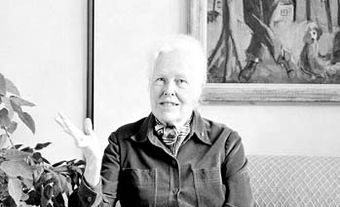Claude-Henri Grignon, OC, journalist, critic, novelist, author of radio and TV serials (born 8 July 1894 in Sainte-Adèle, QC; died 3 April 1976 in Sainte-Adèle). Winner of the Prix Athanase-David, member of the Royal Society of Canada and an Officer of the Order of Canada, Grignon is known primarily for his novel Un homme et son péché (1933), whose hero, the miserly Séraphin Poudrier, became the central figure in the novel’s adaptations for radio, television and film. This original and powerful novel broke with the convention in Québec literature of extolling rural life. Grignon, who has other publications to his credit, also became known as a virulent critic thanks to Les Pamphlets de Valdombre (1936–43).
Education and Early Career
Born and raised in Sainte-Adèle in the Laurentians in a family of nine children, Grignon attended Collège Saint-Laurent for two years, but he was for the most part self-taught.
By 1916, Grignon was working as a federal bureaucrat, while at the same time beginning his long career as a journalist. He published his first article in L’Avenir du Nord in Saint-Jérôme under the pseudonym Claude Bâcle. He went on to write for La Minerve, Le Nationaliste, Le Matin, Le Canada, La Revue populaire, La Nation de Québec, L’Ordre, La Renaissance, Le Petit Journal and Le Bulletin des agriculteurs.In 1920, he adopted the pseudonym Valdombre for his polemical journalistic work. He was the director of the literary pages for En Avant! as well as for Le Bulletin des argriculteurs.
In 1928, Grignon published his first novel, Le secret de Lindbergh, an idiosyncratic biography of the life of American aviator Charles Lindbergh. In 1934, the year after the publication of his masterpiece, Un homme et son péché, Grignon published a collection of novellas, Le Déserteur et autres récits de la terre.
Un homme et son péché
Grignon’s most important work, the novel Un homme et son péché, was first published in 1933; a revised, definitive edition appeared in 1935. Set in the village of Sainte-Adèle, Un homme et son péché is centered around the miserly Séraphin the novel’s anti-hero. Séraphin despises and is despised by everyone in the village, with the exception of his long-suffering and pious wife, Donalda. When Donalda falls ill, he refuses to get a real doctor for her for fear of the expense, and when she dies, he buries her in a coffin that is too small for her. In the end, Séraphin dies while trying to retrieve gold pieces he has hidden in a sack of oats as his house burns down. Un homme et son péché is regarded as one of the first modernist novels in the roman du terroir tradition (novels on rural life in Québec), and the first to cast a critical and satirical eye on rural life in pre-Quiet Revolution Québec.
Grignon received the Prix Athanase-David for Un homme et son péché in 1935. The novel was translated into English as The Woman and the Miser (1978).
Adaptations
With the help of his cousin, the novelist Germaine Guèvremont, Le Déserteur et autres récits de la terre was adapted for radio. Un homme et son péché has been repeatedly adapted to a variety of mediums. The novel was adapted as a radio series that was broadcast from 1939 to 1965, first for Radio-Canada and then CKVL in Montréal; in 1949, it was shot as a feature film by Paul Gury; another feature by the same director was released in 1950 under the title Séraphin. The novel was transformed into a comic strip with the help of illustrator Albert Chartier and scenarios by Grignon, and published in monthly installments in Le Bulletin des agriculteurs between 1951 and 1970 (it was re-edited in book form as Séraphin illustré in 2010). Grignon adapted the book for television under the title Les Belles Histoires des pays d’en haut, which was on air from 1956 to 1970. Another feature film based on the novel, Séraphin: Un homme et son péché, directed by Charles Binamé, was released in 2002.
Polemics
Grignon had a reputation from early on as an essayist and polemical writer. In 1936, under the pseudonym Valdombre, he published Au pays canadien-français and Précisions sur “Un homme et son péché.” Le mal qui nous ronge: notre défaut d’observation was published in 1938. Between 1936 and 1943 he published 46 issues of the literary and political review les Pamphlets de Valdombre, featuring Grignon’s characteristic and often violent invective.
Political Career
Claude-Henri Grignon was the mayor of Sainte-Adèle from 1941 to 1951.
Honours
1935: Prix Athanase-David for Un homme et son péché
1962: Member of the Royal Society Of Canada
1969: Officer of the Order of Canada

 Share on Facebook
Share on Facebook Share on X
Share on X Share by Email
Share by Email Share on Google Classroom
Share on Google Classroom


